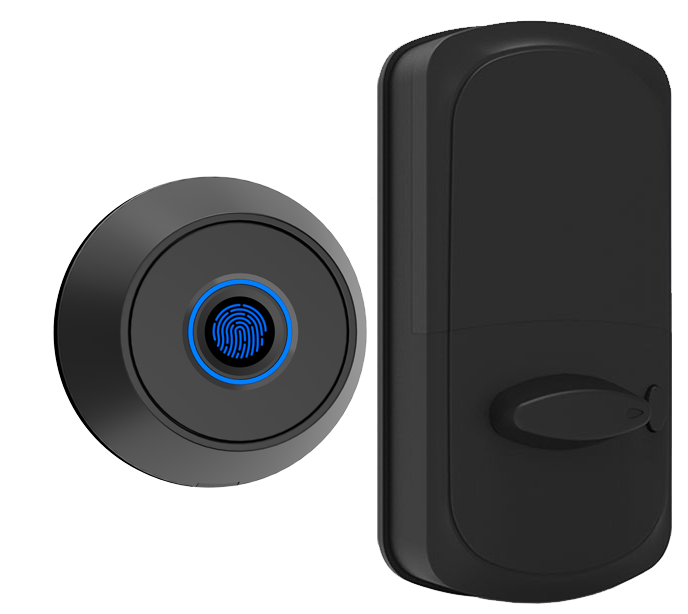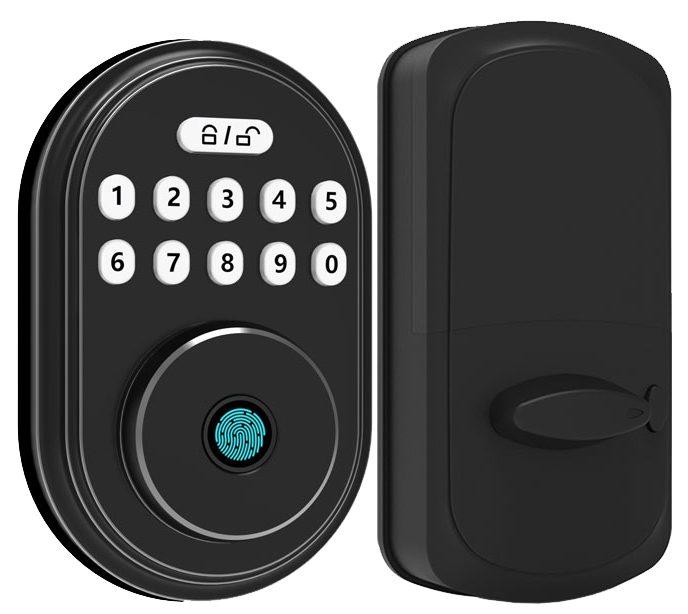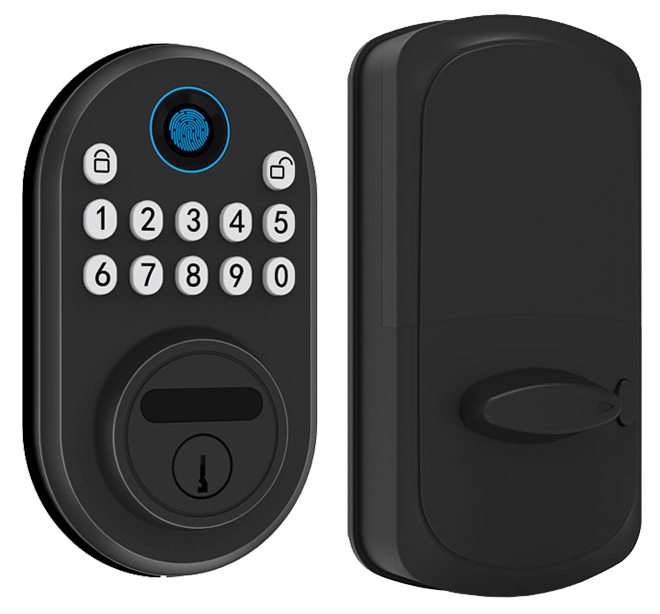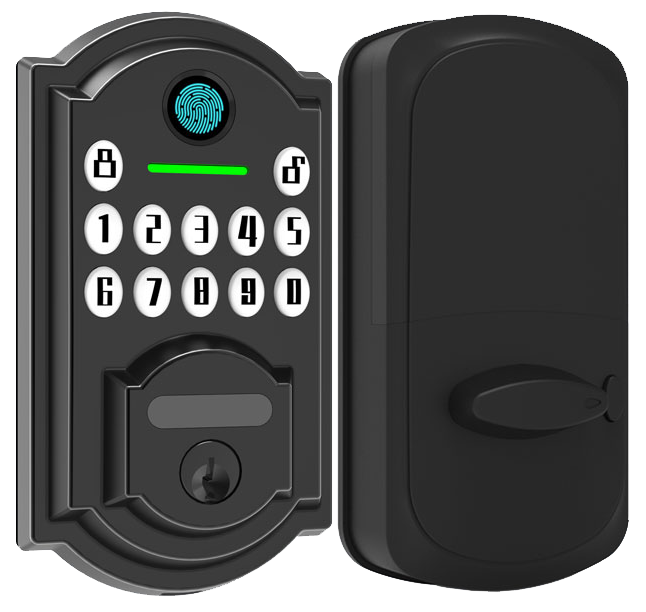Ever wonder if your front door could recognize you by touch? Our smart locks use a biometric fingerprint sensor (a reader that checks your unique fingertip pattern) to let you in without loose keys or forgotten codes. It scans your finger in a blink and unlocks with a smooth metal faceplate. No more digging through your bag at the door.
Picture that sleek metal faceplate under a soft LED glow. You press your finger and hear a reassuring click, like high-fiving your home. Then you step inside 0.3 seconds later, thanks to lightning-fast recognition and a false accept rate below 0.001%.
Fast.
Reliable.
Hmm, ready to ditch your keys? Here are five finger door lock choices that bring seamless security to your home. Each one is CE certified (meets safety rules) and tested in rain, sand, and snow for real-world peace of mind. You’ll feel the craftsmanship every time you enter.
Finger Door Lock Explained: How Fingerprint Technology Secures Your Door

Ever fumble with keys at the front door? Our finger door lock reads your fingertip in a blink. This biometric smart lock (a lock that scans your unique fingertip pattern) secures your home the second you touch its smooth metal faceplate. No codes to punch or keys to lose.
Fingerprint access beats PIN codes or loose keys every time. You don’t punch in a number or hunt for a missing key. In just 0.3 seconds the sensor reads your print and you hear a reassuring click. No slow delays or second thoughts.
But it’s not just fast. Copying a fingerprint takes way more work than guessing a PIN or picking a lock. That means a real boost in security.
Here are the key specs you should know:
- Recognition time: 0.3 seconds
- False Acceptance Rate (FAR) (<0.001%): chance a wrong print gets in
- False Rejection Rate (FRR) (<1%): chance a valid print is rejected
- Storage capacity: up to 100 unique fingerprints
- Multi-access modes: biometric fingerprint sensor (a lock that scans your unique fingertip pattern), PIN code, mechanical key override, anti-peep PIN (a code you can mask with extra numbers)
You might worry about batteries. Four AA cells power the lock for up to eight months on standby. A low-battery LED glows softly to remind you when it’s time to swap them. And if the batteries ever do die, a hidden key cylinder gives you instant override for convenience and peace of mind in one sleek package.
Types of Finger Door Locks: Capacitive vs. Optical Sensors

Every smart lock that scans your fingertip uses one of two sensor types.
Optical sensors sit behind a smooth metal faceplate and glow with a soft LED (light-emitting diode) light. They capture your fingertip image like a tiny camera. They’re the wallet-friendly pick, usually $50–$120. But tiny dust specks or a small scratch can confuse the scan. A quick wipe usually does the trick.
Capacitive sensors (a reader that checks tiny electrical charges on your skin) feel a bit more high-end. They cost $120–$200 and hit about 99.7% accuracy. Perfect for busy front doors or spots where dust, heat, or humidity might challenge an optical scanner.
| Sensor Type | Detection Method | Accuracy | Avg. Price |
|---|---|---|---|
| Optical | Soft LED light capture | ~98% | $50–$120 |
| Capacitive | Skin’s electrical charge | ~99.7% | $120–$200 |
Pick optical if you’re watching your budget and don’t mind a quick sensor wipe. Choose capacitive for a more robust scan when conditions get tough. Either way you’ll get a reliable biometric lock that keeps you in and unwanted guests out.
Selecting the Best Finger Door Lock from Starlight Smart Locks

Ever fumbled for your keys in the rain? We’ve all been there! That’s why we built our fingerprint door locks (each uses a biometric fingerprint sensor to check your unique fingertip pattern) to blend security with ease. Just tap your fingertip and hear a reassuring click.
At Starlight Smart Locks we’ve spent over 20 years crafting smart locks. Each lock has a smooth metal faceplate and a soft LED glow. They’re tested in wind, dust storms, and snowy peaks.
They’re CE/FCC certified (meets European and U.S. safety standards) and carry an IP65 water/dust rating (keeps electronics safe from dust and low-pressure water jets). Ready for any entryway.
Model FL-1000
- CE/FCC certified smart locks (meets European and U.S. safety standards) for global compliance
- IP65 water/dust rating (keeps electronics safe from dust and low-pressure water jets) to shrug off rain or dust
Model FL-2000 Pro
- Built-in tamper alarm (detects forced entry attempts) and low-battery alert so you’re never caught off guard
- Auto-lock delay adjustable from zero to 30 seconds to match your routine
Model FL-3000 Wi-Fi
- Bluetooth and Wi-Fi support so you can lock or unlock as easily as pairing headphones to your phone
- Mobile app with real-time access logs for up to 1,000 users
Model Mortise-X
- Fits mortise and tubular mortise doors for a quick swap without remodeling
- Solid steel latch and strike plate provide a reassuring click that won’t budge under pressure
Installation and Maintenance Tips for Your Finger Door Lock

Getting your finger door lock mounted right means smoother days and fewer surprises. Think of this as setting up a friendly guard at your door.
- Mount the backplate so the smooth metal faceplate sits flush against the door. Mark the screw holes, drill pilot holes, then tighten each screw until it feels solid.
- Secure the latch and strike plate. Slide the latch into the door’s edge, fasten the screws, then align the strike plate on the frame, you should hear a reassuring click.
- Wire the power module (battery box) to the sensor unit. Snap the connectors together just like plugging in a charger.
- Attach the exterior fingerprint sensor unit onto the backplate. Then fit the interior housing and snug those final screws.
- Enroll your administrator fingerprint first (the master control). Next, add each user’s prints on the keypad (individual profiles).
Maintenance is easy. Want to know a secret? A quick monthly wipe with an isopropyl wipe (a gentle screen cleanse) helps the sensor read prints faster. Swap AA batteries every six to twelve months to keep your smart lock humming and its soft LED glow bright.
FAQs on Finger Door Lock Security and Usage

Final Words
We dove into how a finger door lock works as a biometric smart lock using your fingerprint instantly. We covered key metrics, recognition speed, near-zero false matches, room for 100 prints and multiple entry modes.
Then we weighed optical versus capacitive sensors and guided you through Starlight’s top models, from FL-1000 basics to USB-enabled FL-3000 Wi-Fi. You got clear steps on mounting, power setup and upkeep, plus savvy answers in our FAQ section.
You’re all set to pick, install and enjoy a reliable finger door lock that gives you fluid entry and solid security.
FAQ
How many fingerprints can I save on this lock?
The finger door lock stores up to 100 unique fingerprint templates per device, letting each user add multiple prints for family, staff, or guests.
How fast and accurate is the fingerprint sensor?
The sensor scans prints in 0.3 seconds and keeps false acceptance below 0.001% with under 1% false rejections, for smooth, accurate entry every time.
Which access modes are available on this finger door lock?
The lock offers fingerprint, PIN code, mechanical key override, and anti-peep PIN entry for flexible access that blends quick taps, secure codes, and a trusty backup key.
How does the emergency key override work if the batteries die?
The emergency key override lets you slide in a hidden mechanical key when batteries die. It turns like a normal lock so you can get inside and then swap AA batteries.
How does anti-fake detection protect against spoof attacks?
The anti-fake detection senses live-finger patterns to spot silicone or gel molds. It blocks fake prints so only a real fingertip can open your door, cutting off crafty spoof attempts.
How does the tamper-alert feature work after forced entry tries?
The tamper-alert triggers a loud alarm after three failed access attempts or forced-entry tries. It warns anyone nearby and marks the event so you know if someone tried to break in.



